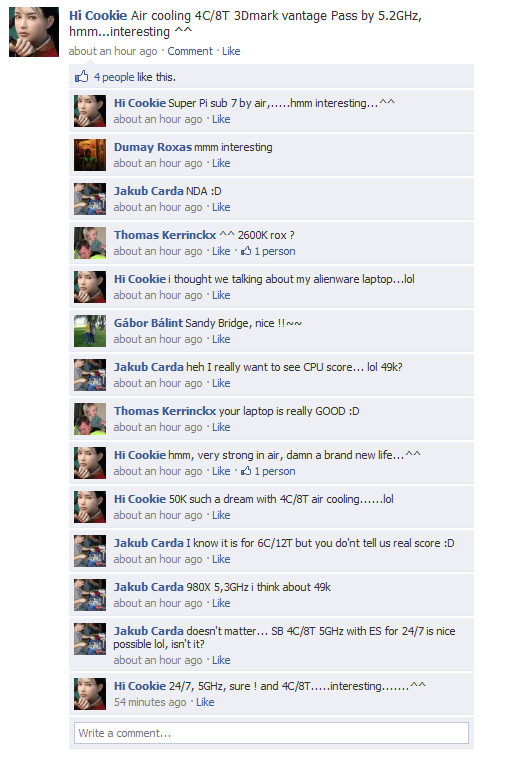As always, daghan jud connection si Anand on both Intel and AMD so here's the first glimpse:
Intel's Sandy Bridge Architecture Exposed - AnandTech :: Your Source for Hardware Analysis and News
for overclock-enthusiasts like myself...a bit disappointing but hopefully its not final, yet.
With Sandy Bridge, Intel integrated the clock generator, usually present on the motherboard, onto the 6-series chipset die. While BCLK is adjustable on current Core iX processors, with Sandy Bridge it’s mostly locked at 100MHz. There will be some wiggle room as far as I can tell, but it’s not going to be much. Overclocking, as we know it, is dead.
Well, not exactly.
Intel makes three concessions.
First and foremost we have the K-series parts. These will be fully unlocked, supporting multipliers up to 57x. Sandy Bridge should have more attractive K SKUs than what we’ve seen to date. The Core i7 2600 and 2500 will both be available as a K-edition. The former should be priced around $562 and the latter at $205 if we go off of current pricing.
Secondly, some regular Sandy Bridge processors will have partially unlocked multipliers. The idea is that you take your highest turbo multiplier, add a few more bins on top of that, and that’ll be your maximum multiplier. It gives some overclocking headroom, but not limitless. Intel is still working out the details for how far you can go with these partially unlocked parts, but I’ve chimed in with my opinion and hopefully we’ll see something reasonable come from the company. I am hopeful that these partially unlocked parts will have enough multipliers available to make for decent overclocks.
Finally, if you focus on multiplier-only overclocking you lose the ability to increase memory bandwidth as you increase CPU clock speed. The faster your CPU, the more data it needs and thus the faster your memory subsystem needs to be in order to scale well. As a result, on P67 motherboards you’ll be able to adjust your memory ratios to support up to DDR3-2133.Spoiler!
still, there are only a few of us (i'm not even an early-adopter) and for majority of the market , this is a good processor, indeed.
edit: i'm sure motherboard manufacturers will always find a way for users to make adjustments to the base clock but i agree that it wouldn't really be that much considering that you now have additional constraints when overclocking processor (memory controller, core, graphics, etc. and now the clock generator).
Results 1 to 7 of 7
Thread: Sandy Bridge Architecture
-
09-14-2010, 04:48 PM #1
 Sandy Bridge Architecture
Sandy Bridge Architecture
Last edited by poldopunk; 09-14-2010 at 05:52 PM.
-
09-15-2010, 05:29 PM #2

Not really interested with the multipliers. But I hope they don't hurt plenty with it comes to the typical consumers, like me.
-
09-15-2010, 05:41 PM #3

the K series of intel proc means UNLOCKED multiplier ..
i love this one..

-
09-15-2010, 05:44 PM #4

I saw one of those in GreenHills when I went there. 10k man siguro tong Core i5-655K. Can't tell if its steep already.
-
09-15-2010, 05:47 PM #5

^^ thanks for the info bro.
-
09-15-2010, 08:06 PM #6

Overclocking won't be that complex anymore if we were stuck with just adjusting the multiplier. That takes out all the fun

-
10-01-2010, 07:49 PM #7

well, this is interesting....
Spoiler!
Hi Cookie's Wall here: http://www.facebook.com/profile.php?...&v=wall&ref=tsLast edited by poldopunk; 10-01-2010 at 07:59 PM.
Similar Threads |
|





 Reply With Quote
Reply With Quote

